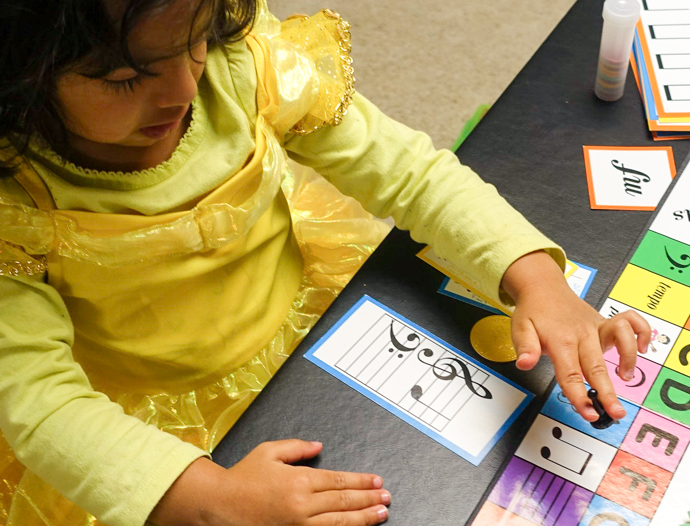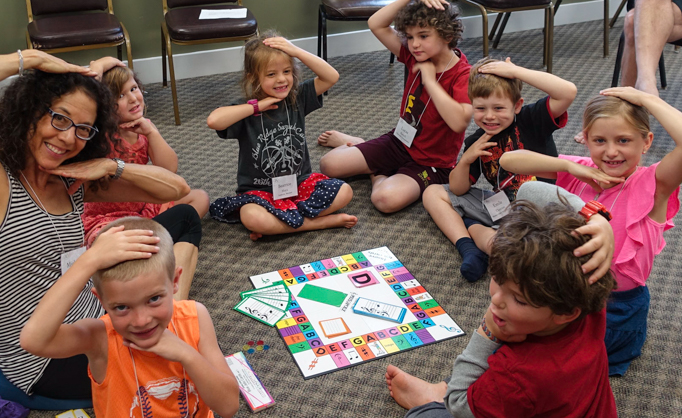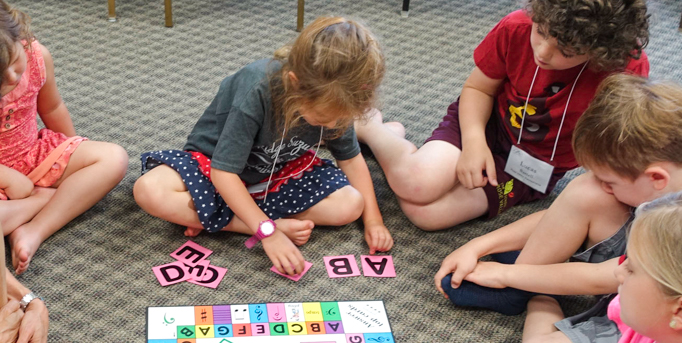See the video on the Game Overview page for instructions on how to set up and play.
Everyone participates in each other's turns together.
Keep Cards On Each Turn
- Rather than placing cards under the stacks, students keep them face up in front of themselves so the learning can continue
Money
- Young students are happy to play without using rhythm playing cards as an incentive
Pawns/Dice
- If there are more than five players, group students into small teams so no one has to wait too long to play again. Each player or team selects one pawn or little animal and places them on different corners. This quietly conveys that they aren't racing each other around the gameboard
- Use just one die
- Little children will often count the dots on the die

Treble Clef or Bass Clef (Blue or Green Space)
- Name the note on the card as a line or space
- Sing all or part of "I'm A Note"
- If this is a new concept, show the card to the student. Point to the note and say "Line" or "Space," and cheer when the student repeats what you said
- Point and say "Treble Clef G Clef" or "Bass Clef F Clef" for the student to repeat

Fermata Space (Pink)
- Alphabet cards: The student identifies one or more letters and/or puts the cards in order
- (or) Do re mi cards: Use a few cards or a do sandwich. You and/or the student can arrange them in order. Play the sequence on a rainbow xylophone & sing together

Sharp Space (Orange)
- Choose a few cards from music symbol cards set 1: line, space, treble clef, bass clef, all notes, and all rests
- Student draws one card, and you define the symbol for them to repeat
